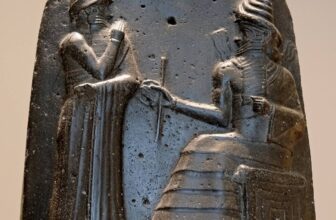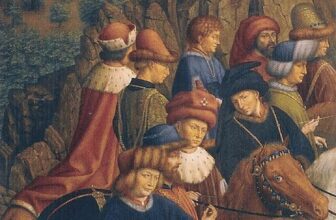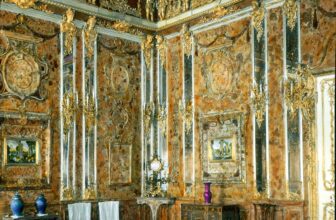What is the Meaning of The Eternal Idol by Auguste Rodin?
Few sculptures have captured the complexity of human relationships as profoundly as Auguste Rodin’s The Eternal Idol. Created in 1889, this masterpiece of marble and bronze portrays a man kneeling before a standing woman, whose hands rest gently on his head. The figures, locked in a moment of emotional intimacy, seem to evoke timeless themes of love, devotion, and perhaps even submission. But what is the deeper meaning behind this enigmatic work, and why does it resonate so deeply with viewers even over a century after its creation?
The Context of Rodin’s Work
Rodin was a trailblazer of modern sculpture, renowned for his ability to infuse raw emotion and movement into his art. The Eternal Idol emerged during a period when Rodin was exploring themes of passion, sensuality, and the human condition. His work often carried autobiographical undertones, and this piece is no exception. It’s widely believed that The Eternal Idol was inspired by Rodin’s tumultuous relationship with his muse and lover, Camille Claudel. Their romance, marked by intense passion and heartbreaking betrayal, deeply influenced both artists.
Analyzing the Composition
At first glance, The Eternal Idol appears to celebrate love and adoration. The man’s posture, kneeling with his head bowed, suggests reverence and submission. The woman, in contrast, stands tall and serene, embodying an almost divine presence. Her touch, though tender, conveys a sense of authority or detachment. This interplay of positions raises questions: Is the man worshipping the woman? Is she indifferent to his devotion? Or does the sculpture depict a more universal commentary on the dynamics of power and vulnerability in relationships?
Symbolism and Interpretations
Rodin’s work invites multiple interpretations:
- Love as Worship: One of the most common readings is that the sculpture depicts love as a form of worship. The man’s kneeling position could symbolize the elevation of the beloved to an almost sacred status, suggesting that love transforms the mundane into the divine.
- Power Dynamics: Others see The Eternal Idol as a commentary on the unequal dynamics in romantic relationships. The man’s submissive pose and the woman’s detached demeanor could reflect the imbalance of power that often exists in love, an imbalance that can lead to both ecstasy and despair.
- The Divine Feminine: The sculpture’s title, The Eternal Idol, hints at a broader cultural or mythological perspective. The woman may represent the archetype of the “eternal feminine,” an idealized figure of beauty, inspiration, and sometimes unattainable perfection. The man’s reverence could then symbolize humanity’s timeless quest to understand and connect with this ideal.
- Emotional Alienation: Despite the physical closeness of the figures, there’s an emotional distance that’s palpable. This could suggest the inevitable isolation that exists even in the most intimate relationships, a recurring theme in Rodin’s work.
The Legacy of The Eternal Idol
Part of what makes The Eternal Idol so compelling is its ability to evoke deeply personal responses. Some viewers see it as a celebration of love’s transformative power; others find it a poignant reminder of love’s complexities and contradictions. Rodin’s genius lies in his ability to capture this ambiguity, allowing each viewer to bring their own experiences and emotions to the interpretation.
Beyond its artistic brilliance, the sculpture’s legacy is also tied to its influence on modern art. Rodin’s willingness to explore raw human emotions and unconventional forms paved the way for future generations of artists to push the boundaries of expression.
The Eternal Idol is a meditation on the eternal mysteries of love and human connection. Through its intricate interplay of form and emotion, Rodin challenges us to reflect on our own experiences of love, devotion, and vulnerability. In doing so, he ensures that his work remains as timeless and relevant as the themes it explores.
Auguste Rodin: The Master of Sculptural Emotion
Auguste Rodin, often hailed as the father of modern sculpture, created works that breathed life into marble and bronze. His ability to capture human emotion, passion, and struggle cemented his legacy in art history. Below are some of Rodin’s most famous works, each a testament to his genius and the intricate depths of human experience:
1. The Thinker (Le Penseur)
Originally conceived as part of a larger piece titled The Gates of Hell, The Thinker is perhaps Rodin’s most iconic work. The sculpture depicts a man deep in contemplation, muscles taut as if grappling with profound thoughts. Its universal appeal lies in its ability to embody the struggles of the human condition, making it a timeless symbol of intellect and introspection.
2. The Kiss (Le Baiser)
A celebration of love and passion, The Kiss portrays a tender moment between two lovers, Paolo and Francesca, inspired by Dante’s Inferno. Their lips never touch, leaving the moment suspended, heightening the intensity of desire and yearning. It’s a work that exudes intimacy while inviting viewers to imagine the unspoken.
3. The Burghers of Calais (Les Bourgeois de Calais)
This masterpiece honors the heroism of six citizens of Calais during the Hundred Years’ War. Rodin captured their anguish, courage, and vulnerability in remarkable detail. The figures stand together, yet each tells a personal story, emphasizing the collective sacrifice and individual pain of their plight.
4. The Gates of Hell (La Porte de l’Enfer)
An ambitious and monumental project, The Gates of Hell was inspired by Dante’s Inferno. It features over 200 figures, including some of Rodin’s most famous standalone sculptures like The Thinker and The Kiss. This dynamic and chaotic composition showcases the torment and despair of the human soul.
5. Monument to Balzac
Rodin’s tribute to the French novelist Honoré de Balzac is a bold, unorthodox sculpture that captures the writer’s essence rather than his likeness. Initially criticized, this work has since been praised for its raw power and innovative approach to portraiture.
6. Eternal Springtime (L’Éternel Printemps)
A celebration of love and vitality, this sculpture features a couple entwined in a dance of affection and passion. The fluidity and movement in their embrace reflect Rodin’s ability to infuse his sculptures with life.




